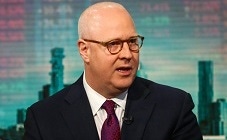Wells Fargo’s Institutional OCIO solution provides discretionary investment management and specialized services designed to meet the investing, philanthropic, and administrative priorities of foundations, endowments, and other tax-exempt entities with assets in excess of $25 million.
Committed to supporting your mission
We will listen to your priorities and take the time to understand your mission and vision. Our portfolio managers have the knowledge and experience to customize your portfolio in support of your mission.
Our fiduciary approach
We put your interests ahead of our own. This underscores our commitment to provide unbiased, prudent, and comprehensive investment management while avoiding self-dealing and conflicts of interest.
Local relationships and national resources
Your local relationship manager is supported by the extensive resources of Wells Fargo, including banking and lending services, to help you grow and enhance the strength of your organization.
Six key principles of philanthropic investing
1. The mission matters
We help you develop clearly defined goals and objectives for your investable assets. We then create a customized investment strategy that aligns with your mission and values.
2. Understand cash-flow needs
The cash flow needs of your organization should be documented through a detailed spending policy. Size and timing of cash flows are critical inputs when developing an investment policy and strategy.
3. Know the importance of time horizons
An investment time horizon is more than perpetuity or a fixed dissolution date. Understanding when your priorities need to be met is essential to determine your appropriate asset allocation and portfolio construction.
4. Design the appropriate asset allocation for consistent results
A diversified, strategic approach to long-term investing remains the most prudent strategy for most investors. While diversification does not guarantee a profit or protect against loss, thoughtful diversification may help your organization achieve more consistent investment returns over time.
5. Uncover, measure, and manage the risks in the portfolio
Growing assets net of inflation, fees, and spending requires allocation to risk assets. A successful risk management program looks beneath asset class labels to understand the risks that drive volatility of returns and recognizes how to mitigate the impact on your portfolio.
6. Build a disciplined process
A disciplined investment process can reduce the influence of inefficient investment decisions during times of market volatility. This can be achieved through a robust Investment Policy Statement (IPS) that is monitored for compliance with your guidelines.
Important questions for your organization to consider
1. Do you understand your fiduciary duty?
You may have a fiduciary obligation to manage your organization’s assets in a prudent fashion. We are fiduciary partners and work alongside our clients to carry out best practices in the stewardship of investment assets.
2. Is your Investment Policy Statement consistent with industry best practices?
The Investment Policy Statement (IPS) is a cornerstone document for proper organizational governance. We have extensive experience helping clients construct and implement a robust, customized IPS.
3. Do you have the appropriate asset allocation?
Asset allocation is the foundation of an investment portfolio. These decisions are the largest drivers of portfolio relative to performance and the ability to achieve your organization’s goals.
4. Could your organization benefit from industry best practices, education, and training?
We can help you stay informed and equipped with the latest education, training, and industry best practices so you can effectively fulfill your mission.
5. What role do alternative investments play?
Alternative investments come in a variety of forms and are not a “one-size-fits-all” category. We can help you understand the purpose and potential benefits and considerations of various alternative investments in your organization’s portfolio.
6. Do you know what fees your organization is paying?
The costs of managing an institutional portfolio do not need to be complex. We communicate all costs associated with managing your organization’s portfolio with full transparency.
You may be interested in...

Are you on course?

Alternative Thinking



